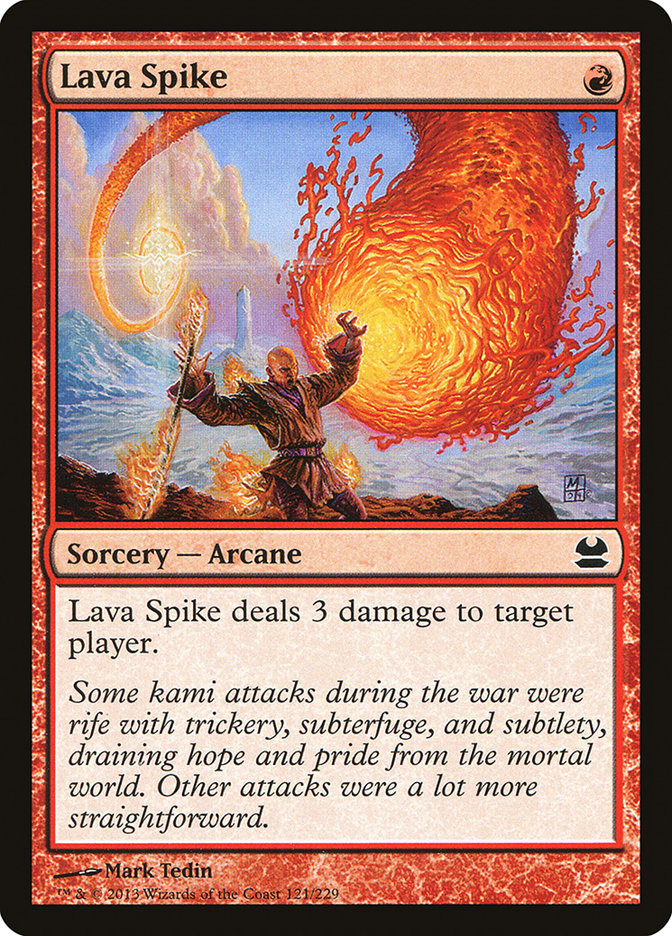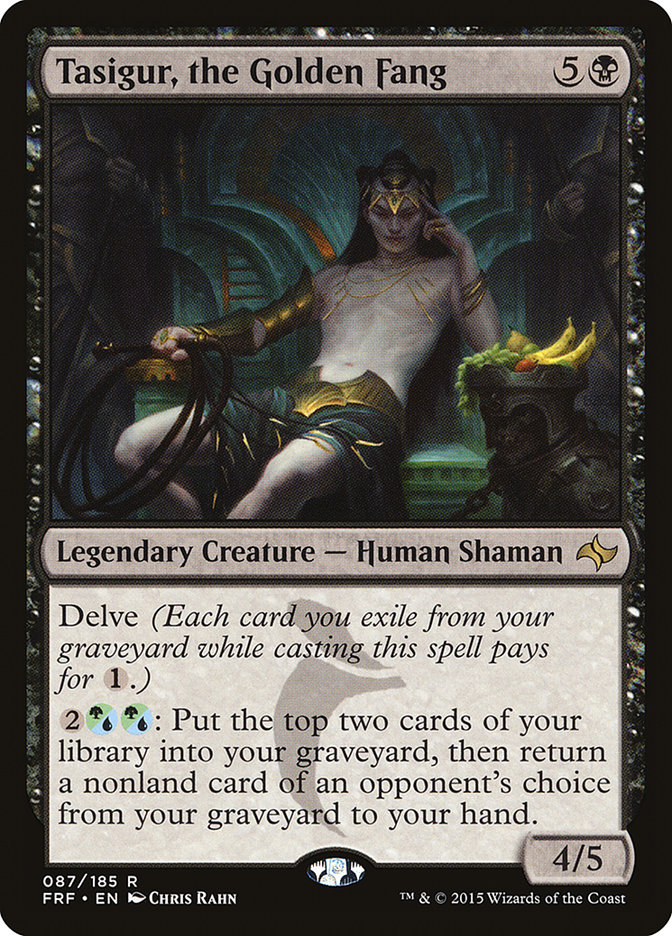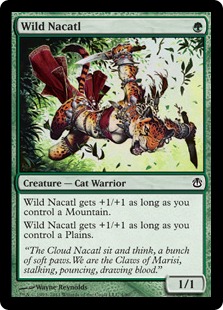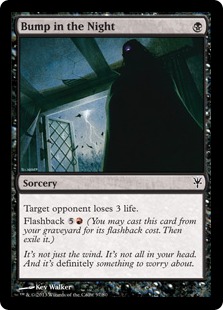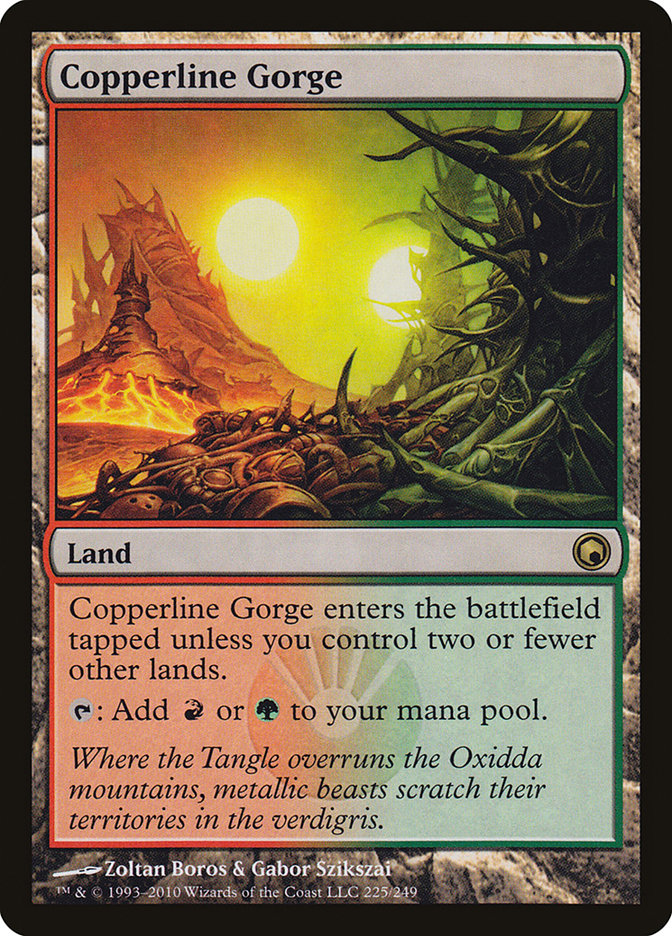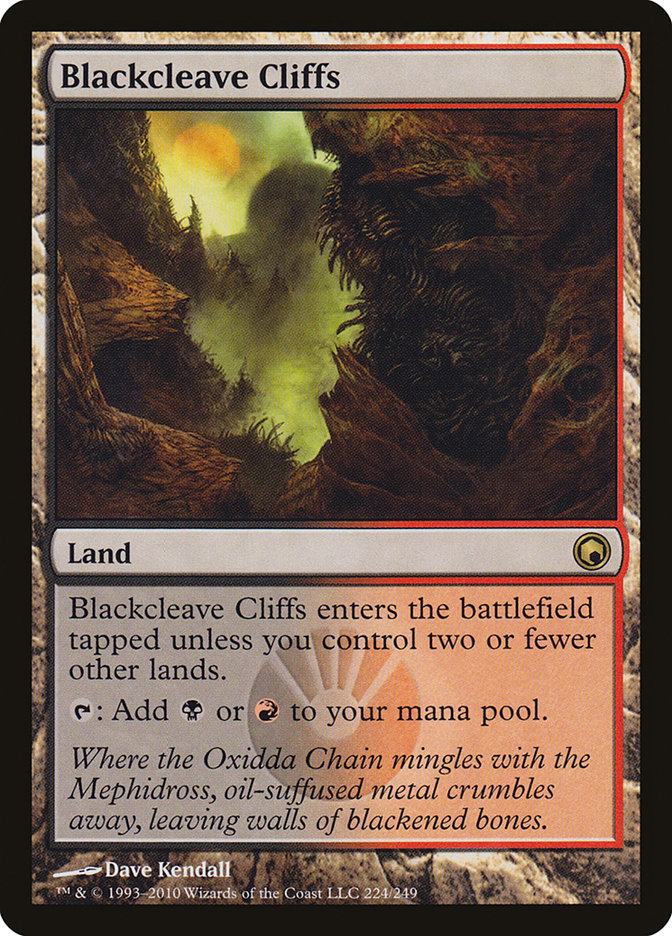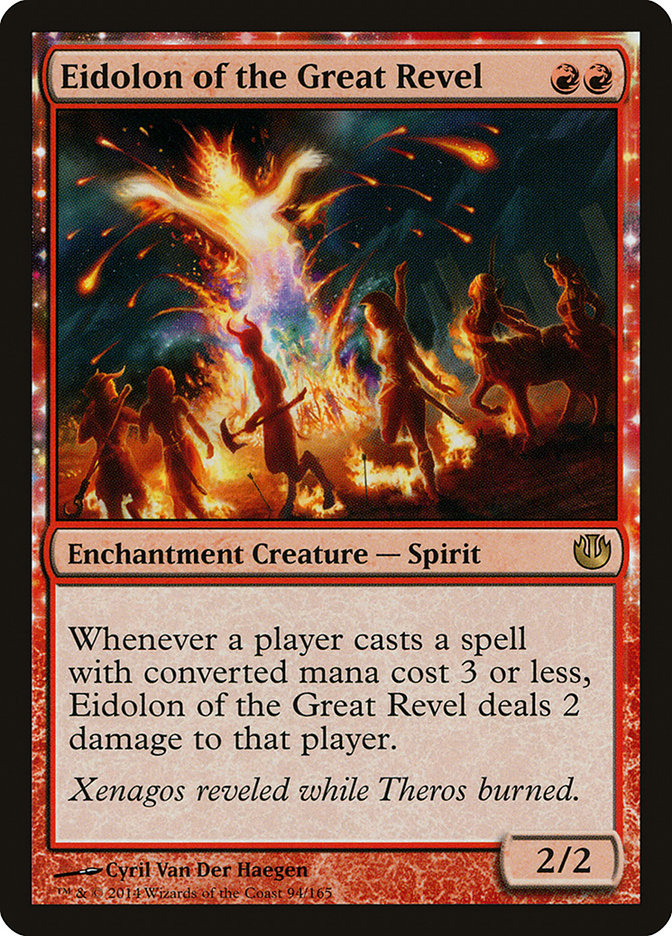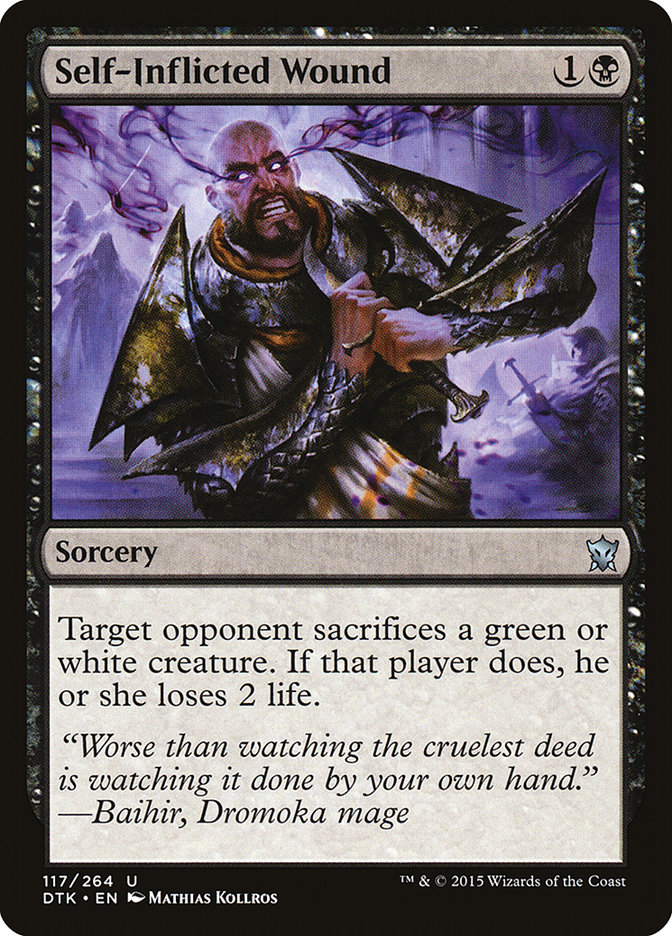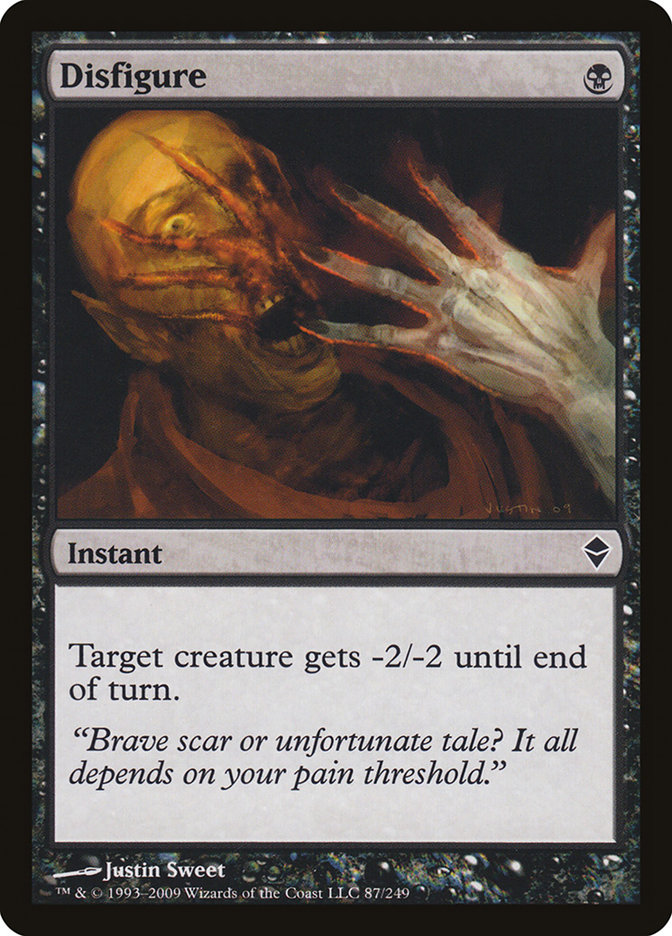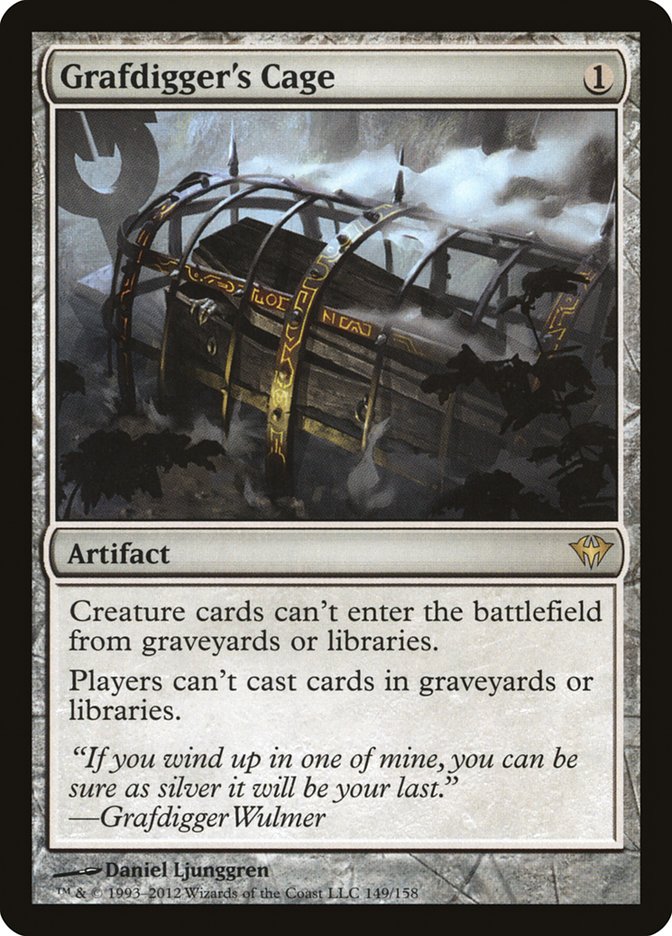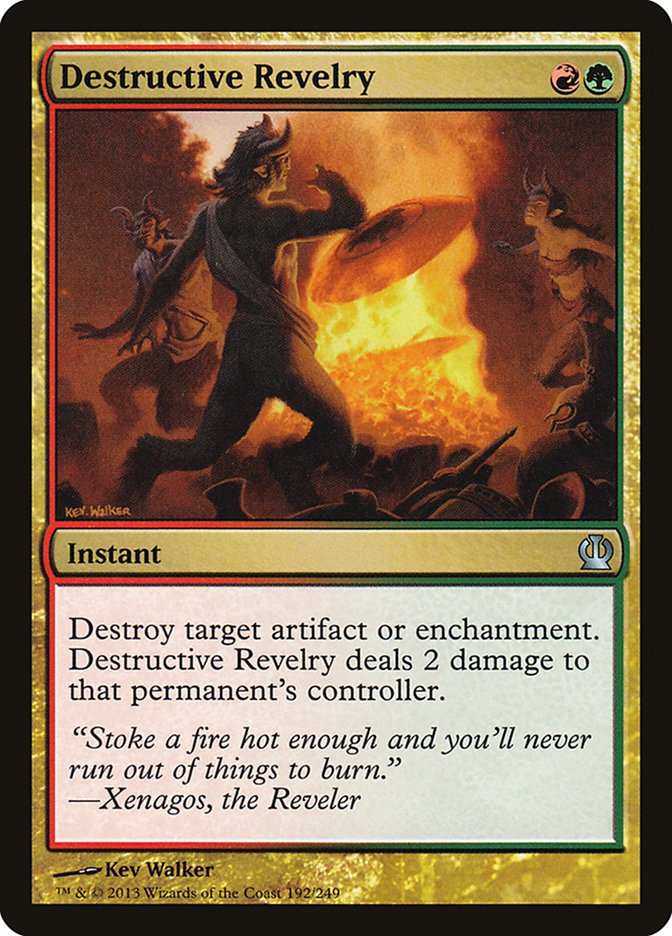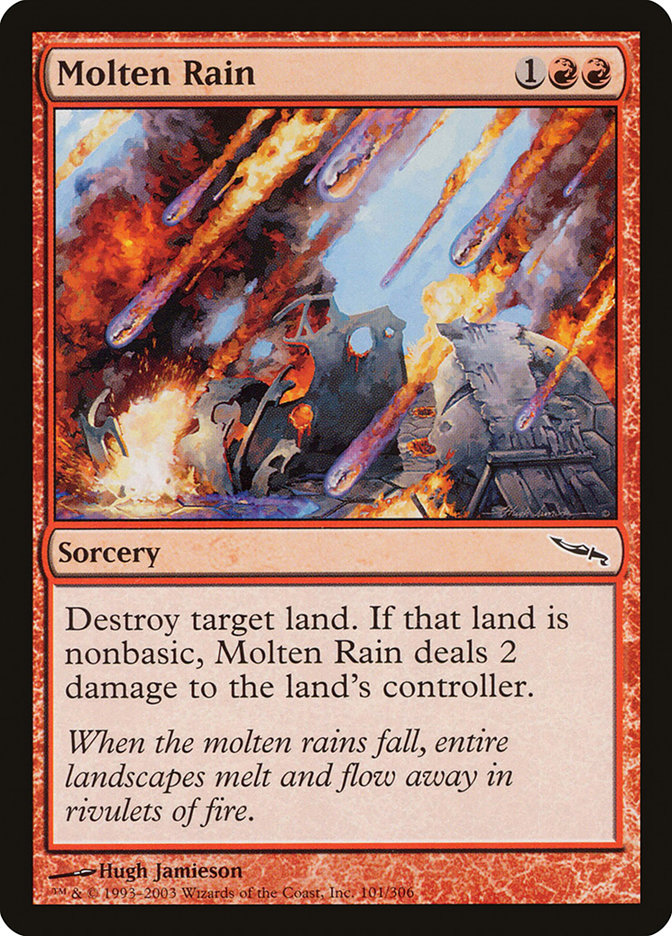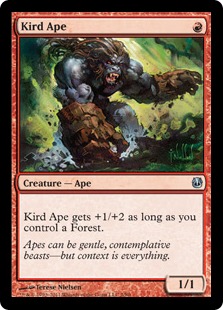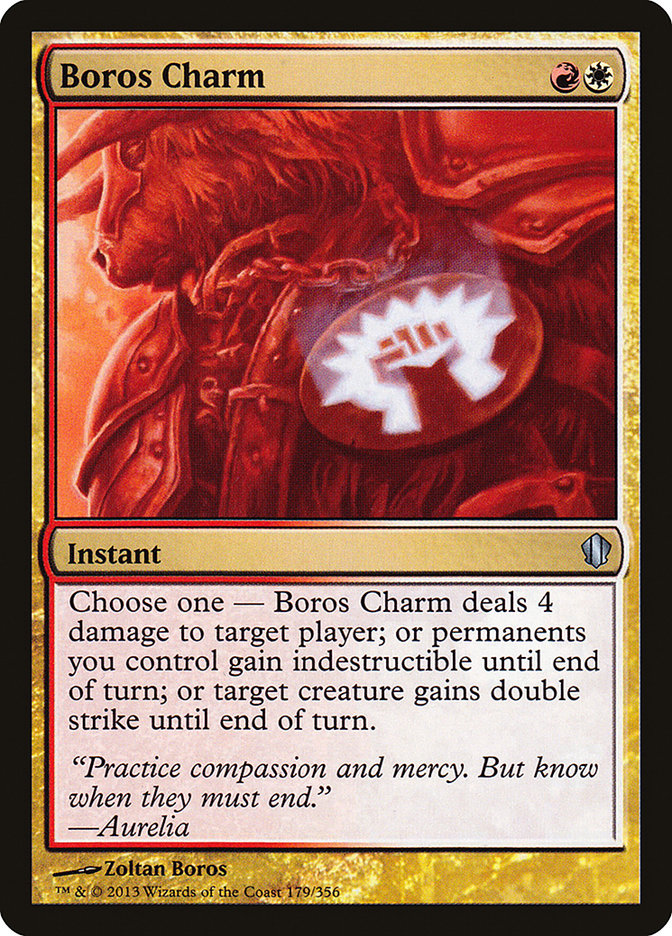Modern is a tough cookie.
There are grindy value decks. There are very fast combo decks. There’s a busted big mana deck. But most of all, there are a number of extremely linear
strategies that are very difficult to interact with.
You may have a great Grixis value deck, but if you don’t have any Diabolic Edict effects or untargeted removal like Engineered Explosives, good luck
beating a turn 1 Slippery Boggle. And when you add those Self-Inflicted Wounds to your sideboard and decide to cut the Molten Rains, then you get paired
against G/R Tron, and they play a turn 3 Karn Liberated on you. Don’t even get me started on Amulet Bloom.
As such, it is pretty difficult to have the right answers at the right times. Do you know what the best answer is to any problem however?
A dead opponent.
The various Burn decks in the format take being proactive to the maximum, as they seek to end the game very quickly regardless of what your opponent
intends on doing. They also do a great job preying on the format’s sketchy manabases, as most decks that want to cast their spells on time are going to
need to take a free Lava Spike or two worth of damage in the earlygame.
Creatures (13)
Lands (19)
Spells (28)
- 4 Lightning Bolt
- 4 Lava Spike
- 2 Lightning Helix
- 4 Rift Bolt
- 2 Shard Volley
- 4 Searing Blaze
- 4 Skullcrack
- 4 Boros Charm
Sideboard

The stock R/W Burn list has been a thing since Pro Tour Khans of Tarkir, where it put up a number of great finishes. The deck is quick and brutal, and takes
advantage of the format’s manabases while playing Legacy caliber threats in Goblin Guide and Eidolon of the Great Revel. Updated lists have upgraded
Skullcrack to Atarka’s Command, but for the most part, stock lists have remained very similar.
However, we aren’t really interested in a stock list; we are looking for improvement.
There are two major ways to go with the deck, as you can add black for extra lategame reach and a much better manabase, or go heavier into green for a
Zoo/Burn hybrid approach.
Creatures (15)
Lands (21)
Spells (24)

Playing black in your Burn deck gives you a number of very interesting advantages.
The biggest is gaining a Tarmogoyf-sized threat that fits wonderfully in the deck.
Tasigur, the Golden Fang is a very powerful Magic card, but it is usually seen in more grindy Jund or Grixis decks. While decks like that are viewing it as
a cheap threat that can be a source of recurring card advantage for the long game, we are viewing it a bit differently. On the front side, Tasigur is
typically a one-mana 4/5 on turn 3. That’s a pretty awesome rate, very capable of blowing through blockers and being a solid recursive source of damage.
Tasigur’s real benefit though is how he can affect longer games. One of the biggest dangers to a burn deck is flooding. As most of your cards do a very
similar thing, having a critical mass of spells is vital for having enough gas to close out a game. In the games you are winning, Tasigur is a huge and
cheap Tarmogoyf-esque creature. In the games you’re having trouble in and flooding out, Tasigur is your method to actually pull ahead and win. All of our
cards are extremely similar, so whenever you activate Tasigur’s ability, you are likely getting back some hot fire. All of your spells are also very cheap,
which means that an active Tasigur allows you to convert five or six mana every turn into constant damage.
A bit subtler than Tasigur is the oft forgotten Bump in the Night. Adding another Lava Spike to our arsenal is great, as it further increases the
redundancy of our deck, and Bump in the Night also provides us with flood insurance with its Flashback cost. With both Tasigur and Bump in the Night in our
decks, we are much more likely to win the games we flood, and any game where Burn draws two or three lands and a ton of spells, it is definitely a
favorite. Bump in the Night being black and being life loss, not damage, also has some nice side effects as well, as it helps give you more outs in corner
case scenarios like Unburial Rites on Iona, Shield of Emeria or damage prevention effects.
One of the other benefits of going to black and green as your splash colors while not caring about land types is you get to use a bunch of Scars lands.
These lands are amazing on the first few turns of the game, and unlike many decks in the format, it is not uncommon to play multiple spells on turns 1 and
2 and still be at twenty life on turn 3! Many times Burn finds itself in racing situations, and that extra three to five life can make a huge difference.
The other big reason this is so important is our use of Eidolon of the Great Revel. Eidolon is one of the best cards in the deck, and is also one of the
most interesting cards in the entire format. An active Eidolon will deal a ton of damage and make sure the game ends very quickly. The three to five life
we save each game because of our Scars lands will let us cast another spell or two, and we are very well equipped to win a damage race with so many
Lightning Bolts in our deck.
Eidolon of the Great Revel is often responsible for very interesting gamestates, where you can find ways to lock your opponent out of playing relevant
spells for the remainder of the game. Of course, if you’re not careful, you can find yourself locked out of the game too, so make sure you are planning
your turns ahead when playing Eidolon- especially if you are playing more than one. Eidolon can create a lot of complicated and interesting gamestates, so
make sure you know what your plan is going to be.
Aside from the benefits to the maindeck, you also gain a number of good tools in the sideboard as well.
Adding black to the deck allows us to answer some of our biggest problems. An early Tarmogoyf or Wall of Roots can be a major roadblock for our early
beaters, and something like Siege Rhino in the midgame can be difficult to overcome. Self-Inflicted Wound is the Searing Blaze for larger creatures, and
Searing Blaze is one of the best cards in the deck.
Disfigure serves a similar purpose, as it answers one of the best sideboard cards against us in Kor Firewalker. It does so in a very clean manner, as it is
also just a very cheap and efficient removal spell that is good in the mirror and on the draw against decks like Affinity.
The rest of the sideboard is filled with your usual suspects. Grafdigger’s Cage helps against both the Goryo’s Vengeance deck as well as any sort of Chord
of Calling/Collected Company deck, while Destructive Revelry is a versatile answer to Leyline of Sanctity. Molten Rain is fantastic against many decks when
you are on the play, but also an important tool for overcoming decks like G/R Tron and Amulet Bloom.
The black version of Burn is my preferred version, but there is another option as well.
Creatures (22)
- 4 Kird Ape
- 2 Grim Lavamancer
- 4 Wild Nacatl
- 4 Goblin Guide
- 4 Eidolon of the Great Revel
- 4 Monastery Swiftspear
Lands (20)
Spells (18)
Sideboard

While my endorsement certainly goes to the black version of the deck, this version definitely has merit as well. Designed by SCGLive’s own Patrick
Sullivan, this deck has the look of some of the old school Zoo decks from formats long past. Any time Patrick wants to talk about casting Lightning Bolt,
it would be wise to listen.
Pat has moved away from Lava Spikes, and instead is using more recursive damage sources like Wild Nacatl and Kird Ape. This, of course, has its benefits
and pitfalls.
On the plus side, a Wild Nacatl that gets to attack twice is worth two Lava Spikes. Any more attacks or blocks further increase its value, and a creature
is much more interactive than a sorcery. If necessary, Wild Nacatl can block and interact with your opponent’s creatures, which may buy you more time to
draw the burn spells you need on a cluttered board. Having a few creatures also greatly increases the value of Atarka’s Command, as the +1/+1 mode becomes
extremely relevant.
The downside is that you are allowing your opponent to interact as well. You can’t Abrupt Decay a Lava Spike, and if your opponent is able to answer your
creatures in a timely fashion, they won’t deal any damage at all. Something like an early Tarmogoyf can also brickwall your team, and it is possible that
you won’t be able to get through for nearly as much damage as you could if your creatures were just Lava Spikes. Lastly, a Kird Ape off the top on turn 6
is not going to finish anybody off- lowering the density of burn spells in your deck lessens your reach. The last issue is you are going to take a ton of
damage from your lands, which can be a liability in some matchups and make your Eidolon of the Great Revels a bit more risky.
There is definitely some risk-reward at stake here, as the Zoo deck is certainly powerful but a bit more volatile. If you are just trying to goldfish combo
decks, then triple one-drop draws are going give you some turn 3 kills; but if your opponent is equipped to interact with you well, you may not have what
it takes to finish them off.
Regardless of the path you choose, Burn is definitely an excellent choice for any Modern tournament at the moment. You are excellent against all of the
various versions of Grixis, and you have a great proactive plan. Some of your combo matchups are a little rough, but with good sideboarding, tight play,
and wise mulligan choices they can be overcome. The new Vancouver mulligan rule is great for the deck as well.
When in doubt, just light ’em up!

